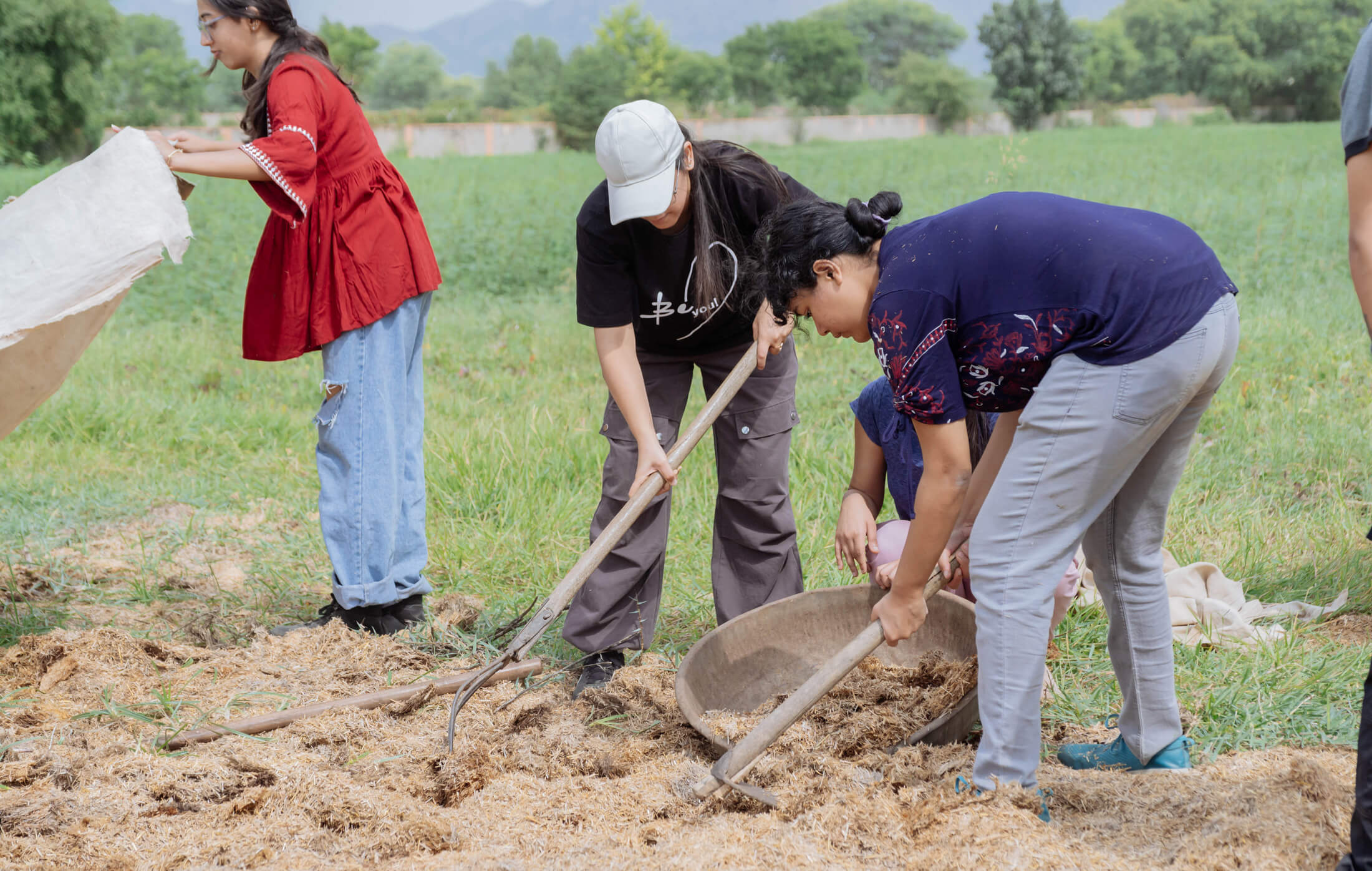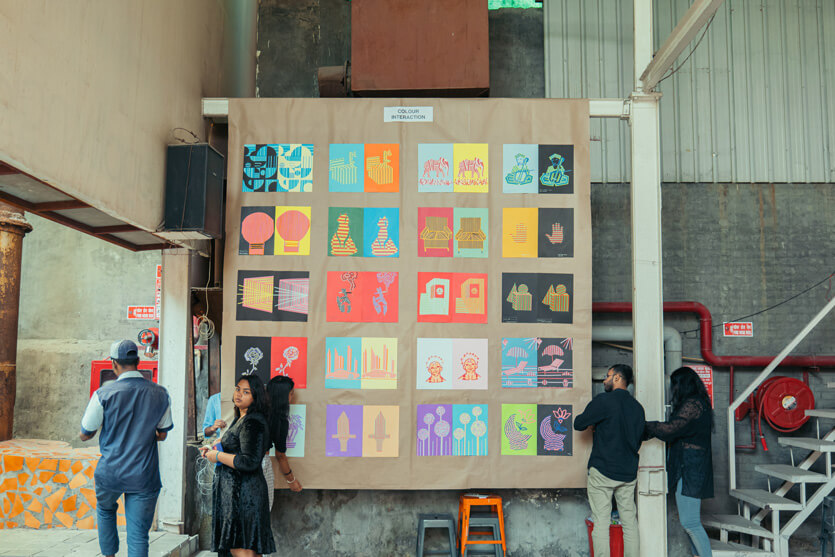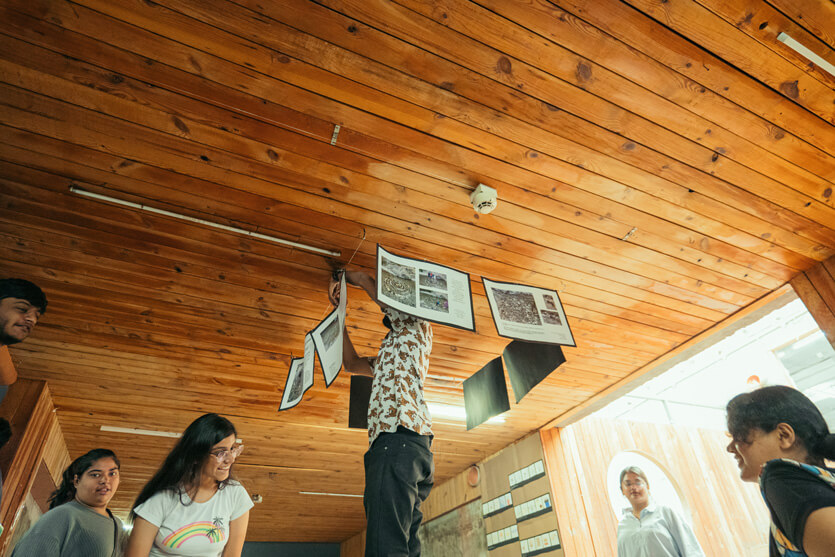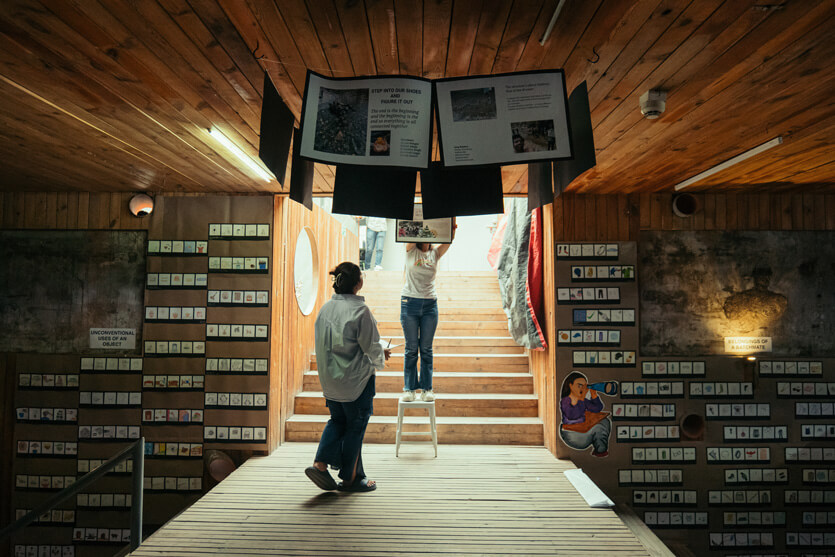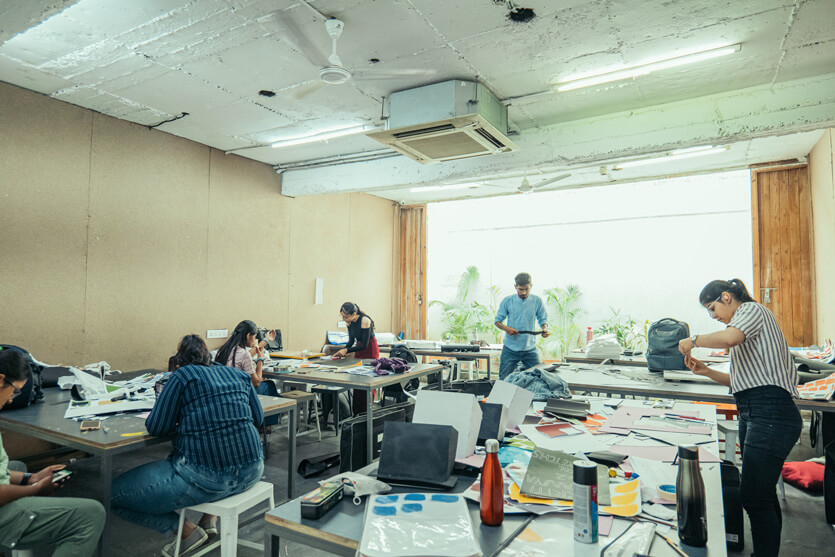Much like an actual village, the design village is an organic whole where culture is respected and rediscovered. A space where one feels a sense of belonging and responsibility, where values of empathy are nurtured by supporting fellow villagers and the village itself.
A design villager has the capacity to envision dreams and the skills to realize them, making them a thinker and a doer.
Villaging refers to all activities undertaken for self development and learning, as well as participating in evolving and maintaining the village itself.
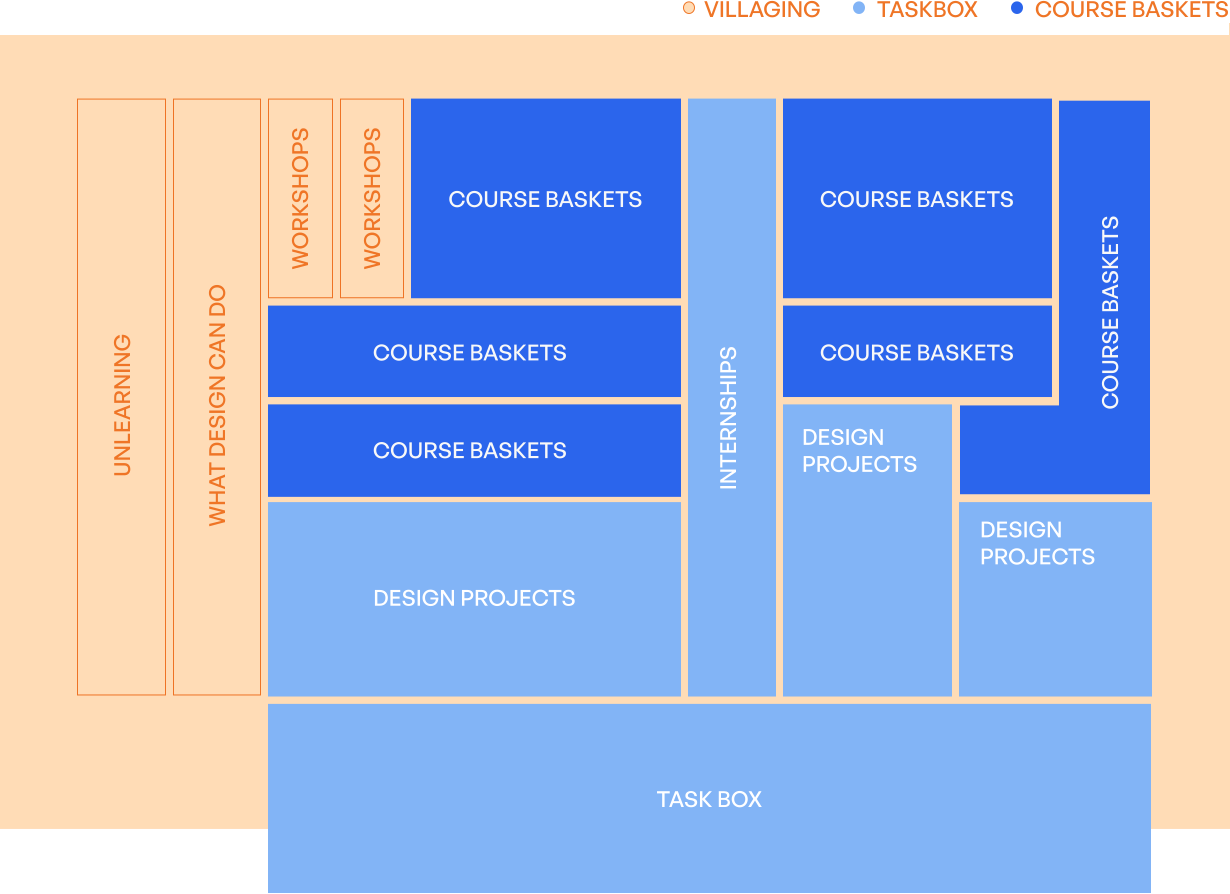
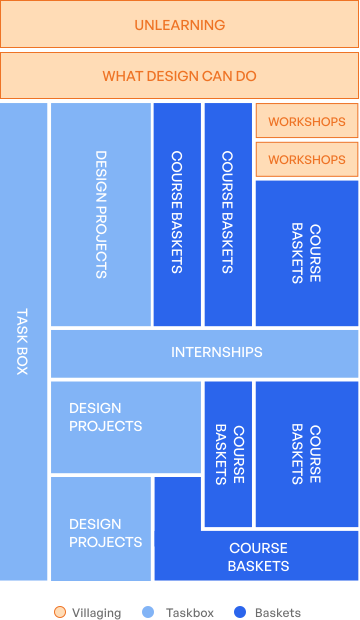
To unlearn, make mistakes, to explore
Students come to TDV from different cultures and environments. They unlearn their preconceived notions. They rigorously explore different materials. They enter a new space which has a completely different culture.
They go out and explore a new space with the teachers, and the idea is to bond with one another. Create curiosity to know each other and the teachers. This can also be an introduction session through the performing arts.
Semester 3 & 4 - Society - Together/ Individuals
To Collaborate, take responsibility
To work and play together, organize an event, a competition through which the students learn by themselves. They learn how to work together and begin positioning themselves as individuals in the community. They learn to take responsibility on campus and also outside the campus. They socialize with the outside world and start tackling social issues within society.
Semester 5 & 6 - Nature - Inside/Outside
To empathize, be insightful
They go out in a natural environment alone and learn how to live and navigate through it. The students start applying their learning outside and they get the learning of the outside world inside the campus and apply them in their projects. They also learn how to disconnect with the current environment and then spend some time alone observing nature. The sensitivity towards the people, if one is visiting a village. To be sensitive to nature.
Semester 7 & 8 - Self - Organize/Self organize
To be mindful, self-positioning
Students go outside to learn in a completely new environment and they start to un-organize themselves and learn how the outside world functions and then start to re-organize/self-organize themselves and start to position themselves in the world. They get inspired by meeting people from the industry and also inspire the current students with the work they do. They learn how to position themselves in the world.
